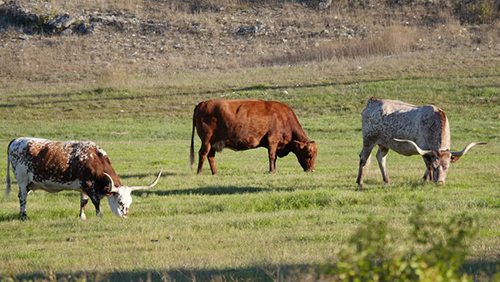Energy Solution? Soil Carbon Storage
By: Emily Nason
Posted on:02/14/2018 Updated:04/28/2021Oil, coal and natural gas will remain the world’s dominant sources of energy over the next decades, whether we like it or not. Technologies that help reduce CO2 emissions from fossil fuels can reverse this trend! Carbon capture and storage (CCS) is particularly promising.

Oil, coal and natural gas will remain the world’s dominant sources of energy over the next decades, whether we like it or not. With resulting carbon dioxide emissions set to increase to unsustainable levels, keeping a global temperature well below 35 degrees is the goal. Technologies that help reduce CO2 emissions from fossil fuels can reverse this trend! Carbon capture and storage (CCS) is particularly promising. CCS takes CO2 from large stationary sources and stores it in deep geological layers to prevent its release into the atmosphere.
So how does this work? carbon capture and storage (CCS) works by trapping CO2 at its emission source, transporting it to a storage location — often deep underground — and then isolating it to keep it from the atmosphere. Additionally, the use of CCS with renewable biomass is one of the few reduction technologies that can be used in a "carbon-negative" mode — effectively taking carbon out of the atmosphere.
One organization that is at the forefront of CCS is The Texas Coastal Exchange (TCX). They are ready to invest money into CCS through grazing lands and grasslands. The amount of carbon contained in soils is directly related to the diversity and health of soil life. All organic carbon stored in soils is extracted from the atmosphere by photosynthesis and converted to complex molecules by bacteria and fungi in synergy with insects and animals. An effective, profitable, and culturally relevant method for increasing soil organic carbon is by restoring grasslands worldwide to their optimal health. By restoring grasslands we have the potential to remove excess atmospheric carbon resulting from both anthropogenic soil loss over the past 10,000 years and industrial-era greenhouse gas emissions. This sequestration potential, when applied to up to 5 billion hectares of degraded grassland soils, could return 10 or more gigatons of excess atmospheric carbon to the earth annually. This could lower greenhouse gas concentrations to pre-industrial levels in a matter of decades. This while restoring agriculture productivity, providing jobs for thousands of people in rural communities, and supplying high quality proteins to millions.
The Texas Coastal Exchange hopes to enhance the economic viability of the Texas coastal agricultural community and maintain agricultural and ranching activities and culture. For this reason, the standards of the TCX have been tailored to support economic development as well as to achieve ecological and social goals.
 Sign In
Sign In
 Sign In
Sign In
